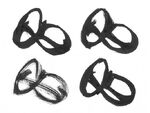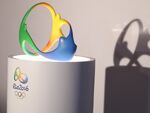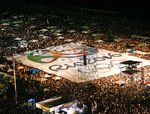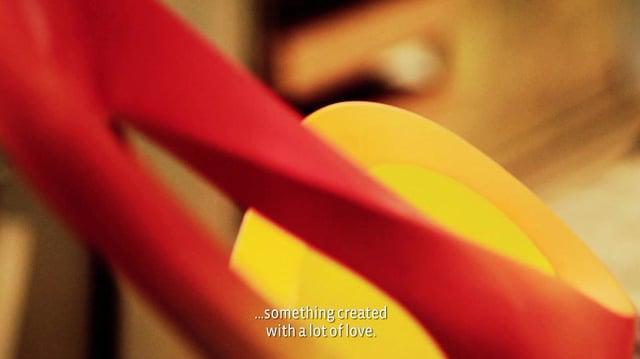| 2007–2008 | 2008–2009 | 2009–2010 | 2010–2016 | 2011–2016 |
Bidding & Interim Process (2007–2010)
2007–2008
Rio's applicant bid logo for the 2016 Summer Olympics was unveiled on December 17, 2007.
The logo depicts the Sugarloaf Mountain in the front of Rio in the shape of a heart. The heart is made of multiple cresant-shaped elements representing the ocean, the sun and the natural landscape which are defining elements of Rio's culture and image. The emblem is painted in yellow, green and blue; the national colours of Brazil.
- Globo.com - Logo da candidatura 2016 é apresentada (Portuguese)
2008–2009
Rio was declared a candidate city in June 2008, as was allowed to add the Olympic rings and the words 'Candidate City' to its logo.
2009–2010
Rio de Janeiro were awarded the games in October 2009 at the 121st IOC Session in Copenhagen, Denmark. 'Candidate City' was removed from the official logo which became the interim logo of the games until the final version was unveiled.
Official Iteration (2010–2016)
Olympics
The contest to create the official logo for the Olympics was launched in April 2010. The selection was exhaustive with 139 agencies involved before eight finalists were chosen.
On September 2, 2010, it was reported that Rio 2016 had chosen a logo out of eight finalists. It would then be sent to the International Olympic Committee for approval and be revealed to the world in ceremony on New Year's Eve.[1]
The emblem to be used by the 2016 Olympics was revealed late on December 31, 2010 at a ceremony during Rio de Janeiro's new years' celebrations, reportedly in front of two million people.
The agency behind the final logo was Tátil from Rio de Janeiro. The emblem shows three figures in dance or embrace. One can also see an abstract silhouette of the Sugarloaf Mountain.
The agency worked both with several values they wanted the identity to communicate.
- Like the preceding logo, the logo exhibits the three national colours and features the Sugarloaf mountains, albeit in a more abstract rendition formed by the figure's arms. The color scheme was taken from nature with yellow for the sun, blue for water and green for forests and hope.
- The main subjects of the logo are three humanised multicoloured figures in embrace, a literal interpretation of the Olympic Games' goal of unifying world citizens in harmony regardless of ethnicity or beliefs.
- The curves of the logo allude to the city's natural formations, architecture and culture. The designers looked at shapes in nature and around Rio for the design of the logo.
- The unusually-curvy form is able to convey many messages to the viewer; infinity, love, passion, celebration, the Olympic Rings, energy, even the word 'Rio' can be spelt out by the logo.
- The wordmark and pictograms were created to suite Rio's animated atmosphere, with letter forms being taken from Rio's surroundings and the human form.
- The Rio 2016 symbol is the first truly three-dimensional Olympic logo. It can take a three dimensional form both virtually as well as physically in the form of sculptures.
- "The brand translates the Olympic spirit and the nature, feelings, and aspirations of the athletes, Rio and the cariocas. Different countries, athletes and peoples are joined in a warm embrace – in an individual and collective move, which at a second glance, reveals one of Rio’s most beautiful icons, a vibrant Sugar Loaf, radiating joy, unity, celebration, and friendship."
- - Rio 2016 Organising Committee Press Release
- Tátil Design de idéas - Paixão e Transformação
- Creative Review - Rio 2016 Olympics logo: a closer look
- Globo Sporte - Rio 2016 shows its face and throws in Copacabana logo Games
- Revista Design - Rio 2016
Paralympics
The Paralympics logo was also designed by Tátil and was unveiled on the 26th November, 2011. Like its Olympic counterpart, the Paralympic emblem alludes to the symbolism of a heart and energy; and it showcases this through an abstract heart shape. It appears to also create the infinity loop, talking of boundless power. The colour palette of the Paralympic emblem is also warmer than the Olympic, continuing the emblem's link to the heart. Especially for the paralympic emblem launch, Tátil also created a custom sculpture of the logo which includes a light bar built into the top strip and a speaker playing a heartbeat sound effect to add to the symbolism of a heart.



























